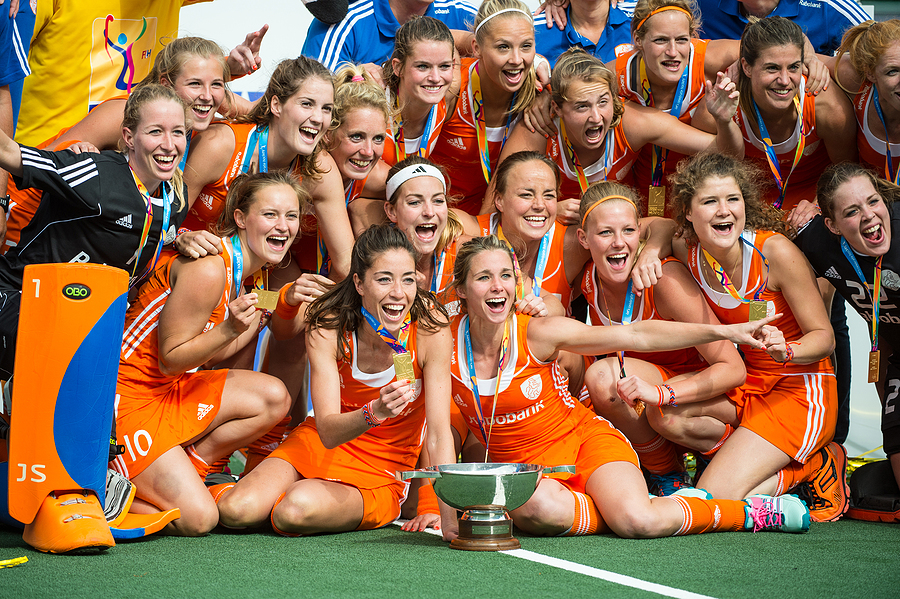
Good to Great At What?
Yes, this is an excellent place to start. Of course, without too much imagination, we could try to improve our abilities at virtually anything. We could try to become better friends, employees, badminton players, lovers, teammates, husbands/wives … the list goes on. Although it is not entirely far-fetched to be able to extend performance psychology principles to all of these areas and more, doing so can be perilous as we risk “chasing too many rabbits and catching none”.
So, in the context of this article and the work we do at Condor Performance, we will focus mainly on motor skills. In other words, moving from good to great at a sport or other performance areas that require human movement excellence and consistency (military, medical, performance arts).
The Bell Shaped Curve (aka BSC)
For those of you who have never heard of the BSC, let me quickly introduce it to you – for it truly is a thing of beauty. For virtually everything where performance can be measured, there exists some form of bell-shaped curve of abilities.
As you can see from the picture below, the overwhelming majority of people who participate in a particular domain are neither awful nor awesome. Roughly 50% will fall in the middle of the spectrum of abilities, somewhere around GOOD plus or minus a little. In other words, it’s not hard to become quite good at something, especially if you live in the right location and have the right genetics. Full credit goes to SimplyPsychology for the excellent picture below, which can be viewed in its original location here.

Fun Runs
Some of the best examples of the normal distribution are Fun Runs. These are 5-km or 10-km organised running races (mainly on the road but some on trails) that anyone can enter, often taking place on weekends. If you look at the finishing times of these events and plot them on a graph, you will see, time and time again, a bell-shaped curve.
Very, very few participants will complete these races in really fast times and really slow times. Regardless of the amount of training done, most participants will finish around a similar time to most competitors. So predictable is this that for massive fun runs like Sydney’s City To Surf, they will put on extra staff at the finishing line for the ‘middle mob’.
I am a classic example of this. I never train seriously for these runs, but with a combination of favourable genetics for running and bloody-minded determination on race day, I always do quite well and slightly better than average. Beating plenty of runners who train more than me is a given. But I never come close to finishing inside the Top 10%. Why?
Because going from Good to Great is exceptionally hard. And for good reason.
One of the main reasons it’s so hard is because natural ability/talent/superior genetics no longer plays a significant role in the same way it does from beginner to good. Of course, these factors still play a role, but beyond reasonable, the quality and quantity of the hard work starts to become a much greater predictor of ongoing improvement.
The Law of Diminishing Returns
Although the law of diminishing returns comes from economics, it perfectly describes the other primary reason why moving from ‘good at something’ to ‘great at something’ is so challenging.
Let’s take golf as an example.
For each shot that you reduce your handicap, the next shot is slightly harder as you get closer and closer to your potential. The concept of potential could be seen as your best in the context of your genetics and opportunities. So moving from a golf handicap of 15 to 10 is easier than dropping from 5 to 4, for example.
Unfortunately, the law of diminishing returns explains why so many exceptional young athletes quit. Many of these youngsters see massive, weekly improvements from ages 8 to 13 and then get frustrated when these improvements slow down and seemingly stop. So they quit, unaware that everyone’s improvements slow down once they pass the GOOD phase.
5 Simple Steps To Help Go From Good To Great
1. Be patient!
Arguably the most important ingredient in the pursuit of excellence. The quality and quantity of your training will need to improve as you improve. This means more sacrifices as you get better. It also means that noticeable improvements will be smaller and less frequent. Do you have the patience to stick with it during this expected and demanding phase? Can you resist the temptation of eating the first marshmallow and wait for the two that will come?
2. Invest in the less common areas of performance.
Around the middle of the BSC most performers start to get pretty good at the obvious stuff. Most reasonable golfers will already have a decent swing, and most semi-pro basketballers will already be able to play a full match without running out of breath.
So, going from good to great via the two most obvious areas of sports science – physical and technical – is flawed. A far more sensible approach is to ramp up improvements in the psychological areas of performance. This, of course, includes sport-specific mental toughness but also the decision-making part of performance.
Typically called tactical, this area is often only done well at the pointy end. Including it in your everyday training will mean you get ahead of the curve. Of course, working out how to improve this less visible area is tricky, so if you need some expert guidance, get in touch with our Intake Team via our contact form and ask about our 1-on-1 sport and performance psychology services.
3. Values Should Come Before Goals
The video below by the one and only Dr Russ Harris does a better job of explaining why values need to come before goals as you go after greatness.
4. Monitor Your Own Numbers
Data can be grouped into three types. Performance/competition stats are typically the most common and least reliable. For most athletes, these stats will depend on many other factors. If you are a cricket batter, the number of runs you score will be heavily influenced by the weather, the bowlers, the fielders, the umpires and the pitch – to name the most obvious.
The other two stats categories are training stats – effort and outcome. As many of my clients will be aware, I believe in the benefit of athletes monitoring their stats and ensuring the majority come from these 2nd and 3rd groups. Why? Due to the superior amount of influence we tend to have on these.
5. Keep An Eye On What The Great Ones Are Doing
This used to be hard to do, but it’s becoming easier. For a start, without breaking the strict confidentiality we, as psychologists, have with our clients, we can provide clues about some of the reasons why the best are, in fact, the best (because we work with a whole lot of them 😃).
The other relatively new resource helping with this step is the boom of sports documentaries. From Wrexham to Drive to Survive, we are getting better access to what happens behind the scenes in elite sports. For example, watching every Break Point episode with a notepad and pen should be compulsory if you are a good tennis player and want to be GREAT.
If you have enjoyed this free article, please take a few minutes to let us know why via the comments section below. Didn’t agree with something? Cool, explain why below. Questions? List them below now. If you wait til later, you’ll forget.

